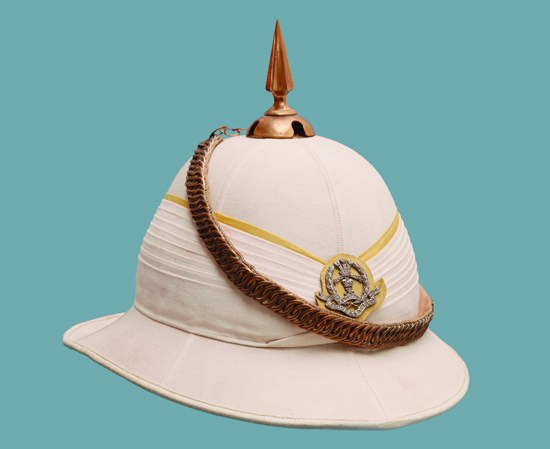
This full dress Wolseley helmet was worn by Lt. Hubert Arthur Oldfield Hanley, DSO, MC, who served in the 1st,2nd and 4th Battalion, the Middlesex Regiment. Note the lemon yellow piping to the puggaree and the cloth backing to the puggaree badge. Lemon yellow was the colour of the facings for the Middlesex Regiment (Author’s collection)
Hubert Arthur Oldfield Hanley was born in Headington, Oxfordshire in 1881, the only son of Charles Hanley, and in 1909 married Mary Constance, the eldest daughter of Charles Walker of Burwash, Sussex. He was educated at Downside school in Somerset and served in the First World War, being mentioned in despatches three times and was awarded the Distinguished Service Order and the Military Cross. He was commissioned as Second Lieutenant into the 6th Battalion (Militia), the Royal Warwickshire Regiment, on the 22nd April 1902.
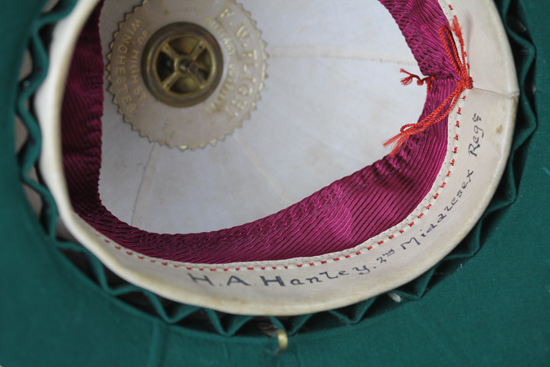
The interior of Hanley’s 1913 Wolseley showing the sumptuous interior with his inked name and battalion on the headband. (Author’s collection)
Lt. Hanley transferred to the 2nd Battalion, the Middlesex Regiment 25th May 1904, as a 2nd Lieutenant and achieved the rank of Lieutenant on the 27th June 1906.
The 2nd battalion had returned from South Africa in 1903 and spent the next ten years in England. In 1913 the 2nd Battalion, the Middlesex Regiment, was stationed in Malta, arriving on the 11th September and subsequently, after the outbreak of war, arrived in France in November 1914.

The notice of disembarkation, in Malta, of the 2nd Battalion, Middlesex, from the London and China Telegraph, issue 15th September 1913.
On the 4th September 1914 Hanley was promoted to the rank of Captain in the 4th Battalion, the Middlesex Regiment, and acting Major on the 24th Jan 1917. On the 26th November 1917 he was promoted to Acting Lieutenant Colonel to the 7th Battalion, the Royal Warwickshire Regiment. His substantial rank, however, remained as that of Captain. He ceased to command that latter battalion on the 17th April 1919.
From the history of the 1st Battalion, the Middlesex Regiment, comes this extract “On the 2nd March Lieut.-Colonel Elgee left the Battalion for England on account of continued ill-health, and Major H. A. O. Hanley assumed command. On this date the Battalion moved back into the Béthune Road sector: on the 3rd 2/Lieuts. Pain and Rowntree were wounded: on the 4th the 8th Division, on the left of the 33rd, attacked the enemy, taking many prisoners and a few machine guns, but the 1st Middlesex were not involved. On the 14th March the Battalion was in Camp 124 (near Sailly Laurette) training.”
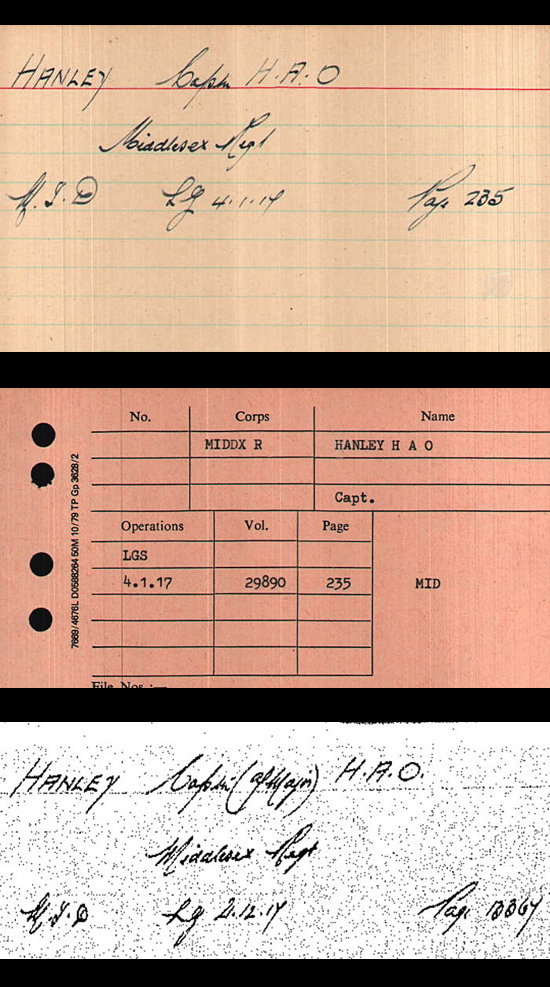
The Mentioned In Despatches (MIDs) cards for Hanley give the entry in the London Gazette which, unfortunately, do not give the details of these MIDs. The first two of these MIDs list the same issue and page of the London Gazette. (Author’s collection)
In addition to being mentioned in despatches three times Hubert Hanley was awarded the Military Cross and the Distinguished Service Order. The citation for his Military Cross, from the London Gazette of 6 April 1918 reads-
An example of the Military Cross which was a decoration for gallantry during active operations in the presence of the enemy.
His citation for his Distinguished Service Order reads –
Hanley, Capt. (A/Major) H.A.O., M.C., 1st Btn, Middlesex Regiment.
“Has served continuously in France since November, 1914. Present at all the operations around Ypres from May, 1915 to November, 1915, including the second battle of Ypres. Commanded the 1st Battalion Middlesex Regiment with distinction from March, 1917 to September, 1917, including the actions around Arras in April and May. Is a most efficient, reliable and very brave officer”.
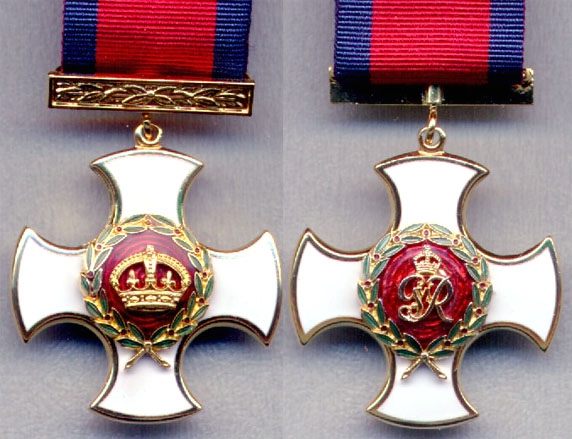
An example of the Distinguished Service Order. From 1st January 1917 it was restricted to recommendations for individuals who were in the presence of the enemy. The award was generally given to an officer in command, but some were awarded to junior officers below the rank of Captain.
Captain Hanley was also awarded the 1914 Star with Clasp & Roses, the British War medal and the Victory medal with oak leaf clasp for his being mentioned in despatches.
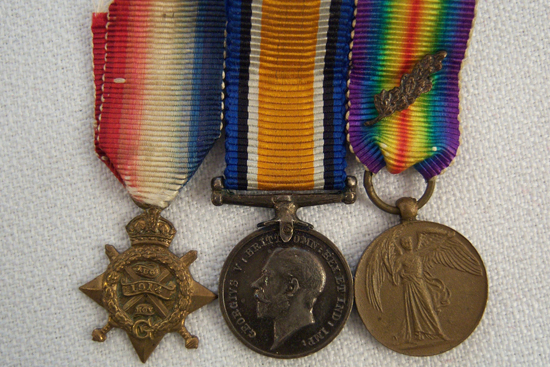
This group shows the oak leaf clasp on the Victory medal earned through the recipient having been mentioned in despatches. (Photo courtesy of Brian Wolfe)
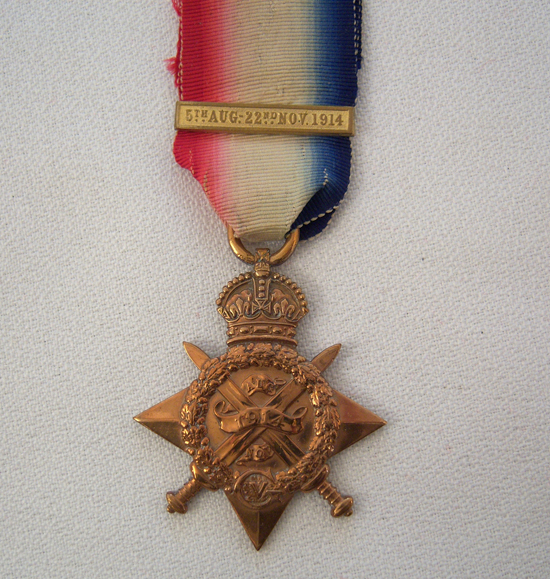
Here is an example of the 1914 Star with clasp indicating action between 5th August 1914 and midnight 22nd November 1914 (Photo courtesy of Brian Wolfe)
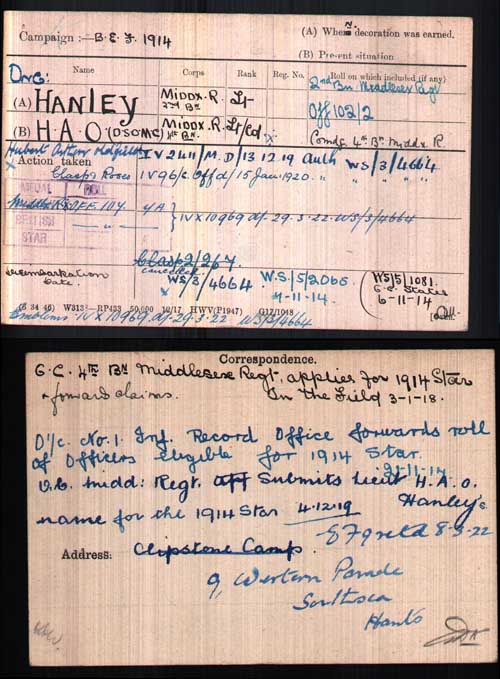
The medal index card (MIC) of Hubert Hanley showing considerable correspondence on his eligibility for the clasp & roses for the 1914 star. It would appear that his eligibility was forwarded twice and subsequently the second request cancelled. (Author’s collection)
Captain Hanley retired from the Army in 1922 after a distinguished career.
Stuart Bates

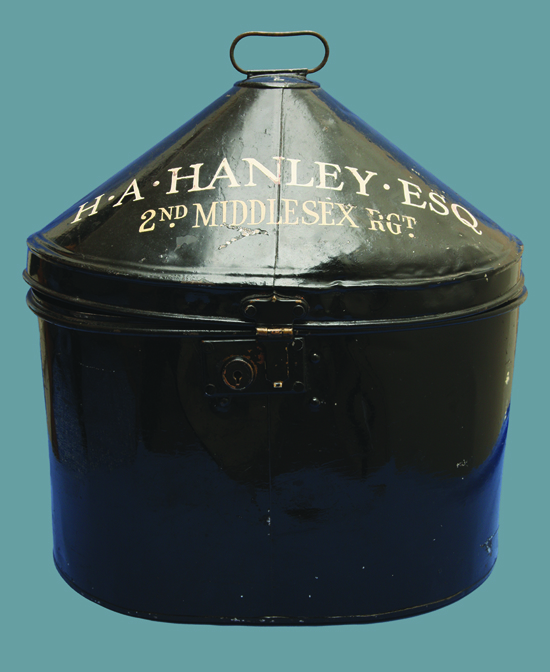
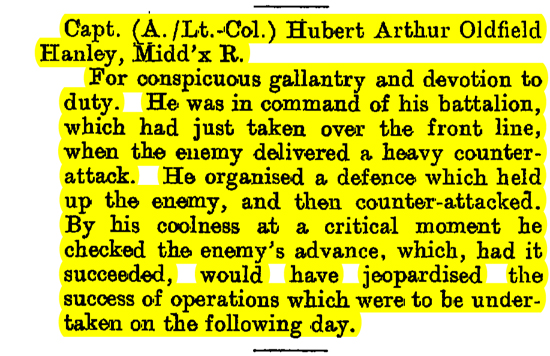
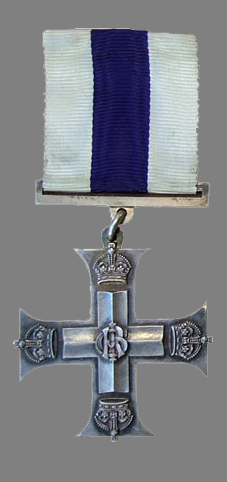
Stuart do i feel another book coming?